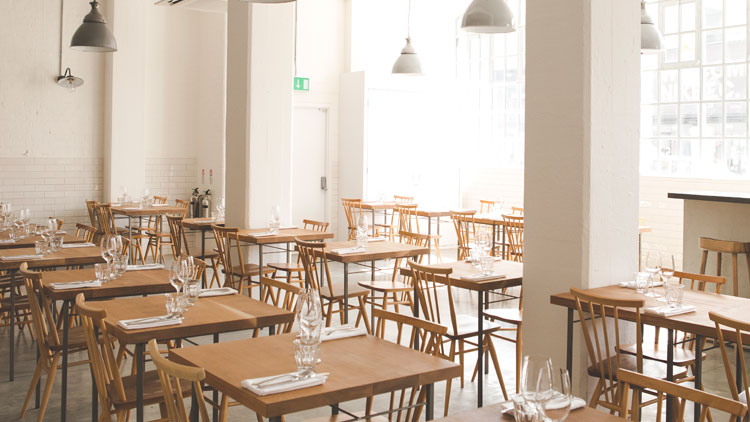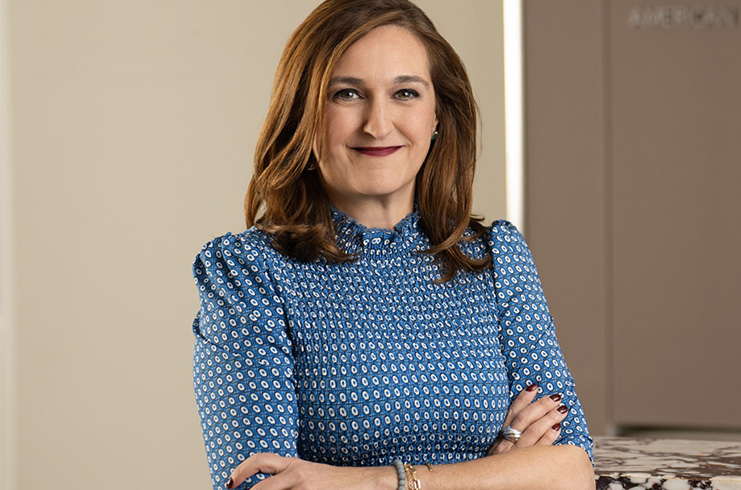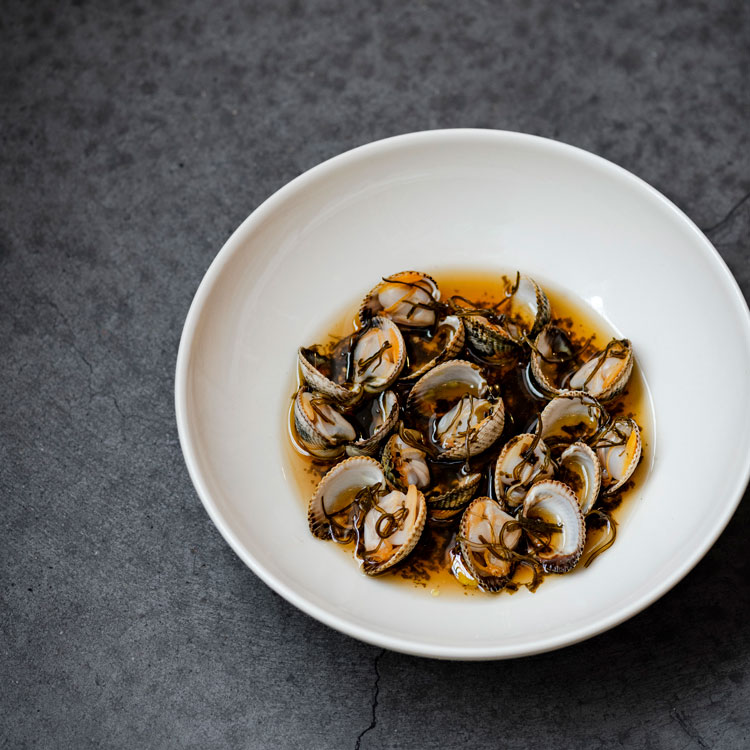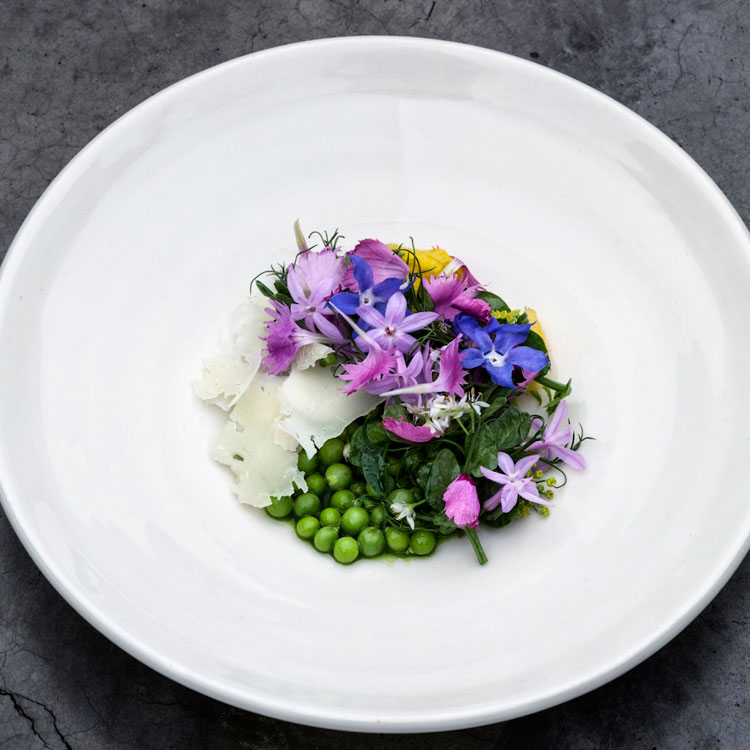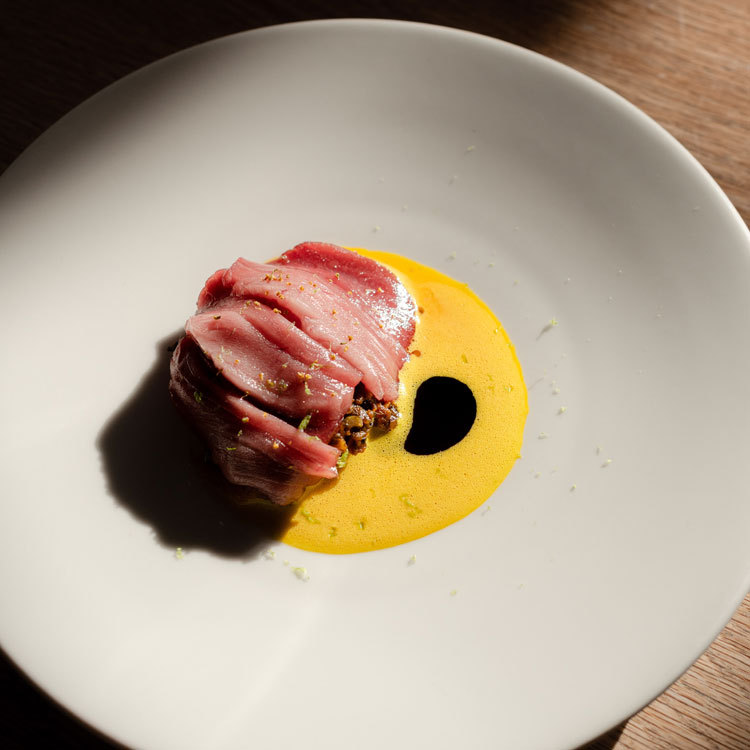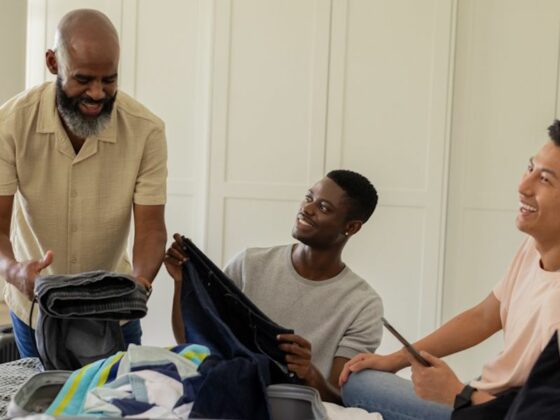When James Lowe opened his debut restaurant Lyle’s in Shoreditch’s Tea Building in 2014 there were high expectations for the restaurant. The former St John Bread and Wine chef was also part of The Young Turks triumvirate, alongside Isaac McHale, now chef-patron at The Clove Club, and Ben Greeno, formerly of Momofuku Seiobo in Australia and was regarded by many as being one of a handful of the brightest young cooking talents in London’s burgeoning food scene.
And so it has turned out to be. With the restaurant now in its 10th year, Lowe has been a leading light in celebrating modern British cuisine and bringing it to a wider audience – Lyle’s was a long-time regular on The World’s 50 Best Restaurants List – and has never compromised his vision. Over the past decade he has supported small-scale suppliers producing the highest possible ingredients and, through Lyle’s The Guest Series, worked with and championed a whole new generation of up-and-coming chefs from across the globe.
Yet the road has not been an easy one. Here Lowe charts the ups and downs, triumphs and challenges of the past decade, shares his philosophy of cooking and restaurants, and looks towards the next decade.
On Lyle’s critical reception
People hated the dining room – one critic said it was like eating in a prison. AA Gill gave us four stars, everyone else tore into it. It was at the time that bloggers were around, which meant that critics had started to come to restaurants super early. Fay [Maschler] said she was an adult and didn’t want a set menu and went to town on us [the restaurant was awarded three stars out of five]. We sat her next to the toilet, which she didn’t like, but she was the last person to walk into the restaurant, where else am I going to put her? Marina [O’Loughlin] admitted it was good, but it wasn’t what she wanted, she said I might as well have called it St John the Baby. It was partly my own fault, I didn’t want to come up with a concept, but just let people enjoy it, but that’s silly because you will be labelled by people who have no clue, and that sticks. I was really naïve.
On the early days
Lyle’s was initially supposed to be open all day for the people in the Tea Building. We’d got down to the final two on two sites in Soho and I’d lost both – I didn’t know how to sell what we wanted to do. When I saw this site, I knew I couldn’t lose it, so I asked the agent what the landlord wants. He said all-day dining so I told them we would do morning coffee and pastries and charcuterie in the afternoon. But we were so short staffed it never happened. The landlord come in month four to eat, didn’t like the food and saw we were not doing the afternoon thing. We designed the restaurant with a raised coffee bar at the front to encourage people to walk in, but people don’t walk into a restaurant for a coffee, it’s too intimidating. The landlord eventually worked out that I had no intention of doing an all-day offer. We broke even for the first time 18 months in.
On his team
At the start it was hard to get chefs. Chefs with Michelin starred backgrounds thought we were too sloppy or the food too simple, while for gastropub chefs we were too particular about things. It was only until 18 months in when we had three Danish and three Australian chefs the kitchen came together. They understood that you can have respect for more casual food but also be really good, like what Tom Adams was doing at Pitt Cue. He was using better animals than any Michelin star restaurant was.
On Lyle’s The Guest Series
Our first guest chef event was six months into the restaurant, and we’ve welcomed over 80 guest chefs since. We did them early in the week to fill the restaurant, although the more covers we were doing the bigger the loss. Early on we had a chef who told us he couldn’t believe we would do this. If you think it’s annoying that a really talented chef from another country and great restaurant comes in and cooks with us then this is not the place for you, the series has been a real litmus test ever since. If someone is new and they see the chaos of The Guest Series and they like it, that’s great. You choose people you think are interesting and for most of the time it works. I love staging and when I was young, I realised there’s no right way of working in a kitchen – anyone who thinks there is is naïve. Maison by Sota Atsumi is my favourite restaurant in Paris. One of my chefs did a stage there and said he doesn’t speak English and that there’s no order. But it’s a brilliant restaurant, it shows it’s possible to have chaos and be brilliant. I like organised chaos. When things become stable, in my head we need to change things.
“I absolutely hate the culture
of storytelling in restaurants”
On menu creation
I always like to see what the possibilities are. If a farmer is doing something interesting and bringing in something new, we need to look at it and see what’s in the larder to go with it. I can’t plan menus in advance. I really hope when I grow up and become a proper chef, I’ll be able to do that. I cooked at the Lost Village festival, and they asked me to confirm the menu in advance, but there was no way I knew what I was cooking. If an ingredient stopped early, I would not buy it from someone I don’t normally source from just to satisfy a menu. So we just wrote ‘subject to change’ at the bottom of the menu. Chefs come here and struggle because we change things all the time – keeping the same ingredients is great for sanity and consistency but it’s so boring. Sometimes I plate a dish during service for the first time because I know the flavour combinations will work even though I haven’t tested them. Jun Tunaka did a stage here after The Ninth closed because of a fire – he loves the restaurant but I’m sure he was thinking ‘this place is a joke’.
On ingredients
I love still discovering new ingredients. The new fishing licences granted for blue fin tuna was one of the most exciting moments in British food for years. I’ve been cooking for 21 years and have never used fresh tuna before, we were watching YouTube videos on how to butcher it. We had a 130kg tuna spread across five tables in the restaurant and were butchering it with meat knives when we really needed swords. We were just a bunch of amateurs, but it was all so exciting with all of us learning at the same time. I am always looking for the best ingredients. We serve Norfolk samphire on the root. You are not meant to uproot samphire, but our forager has been trialling it for six years and has seen that samphire numbers haven’t gone down as a result. Our snails are from Barrow in Scotland. There used to be a rule that they had to be blanched straight away, which meant they were chewy with no juiciness although you would still get that grassy, earthy flavour. These ones still come in dead but are still in the shell, so we control every step of the process. I’ve never had snails of this texture before. Hopefully people think they are nice even if they don’t notice the difference, but it doesn’t matter because I know. I’ve cooked with snails from the start of my career – I made a lot of snail porridge at The Fat Duck.
“The fishing licences granted for blue fin tuna
was one of the most exciting moments
in British food for years”
On reaching 10 years
Our 10th birthday is a big thing for me. We’ve got a 20-year lease and 10 years was the first big marker. The principle of the restaurant has remained – honesty, transparency, humility, and built to last, that’s where the utilitarian design comes from. The places that really inspired me to open a restaurant were The Fat Duck, St John, and The River Cafe, which are all at around 30 years old now. I had in my head that 10 years in things would be super smooth, that we would have a strongly established culture and wouldn’t have to worry about the day-to-day trade or getting people in, but that’s naïve. Even saying that out loud I feel stupid. Stuff keeps happening – the cost of living, changes to salaries, we are down in numbers every month on last year. Maybe I should have done that TV stuff people said I should have done. I’ve always said, you know the restaurant’s in trouble if you ever see me on weekend TV.
On accolades
My sous chef said I was the most miserable person to win a Michelin star. We were finally doing OK, and I thought the star would attract people with high expectations. When people get one now, you see videos of whole teams jumping around, I definitely missed an opportunity there because it means a lot to other people. The star came at the same time that we established a core team, we got a 25% bump in guests from it for a few months. The following year we featured in the back end of World’s 50 Best Restaurants list, which also increased demand, as did featuring in the National Restaurants Awards Top 100. All of a sudden Lyle’s wasn’t weird anymore, it had started to make sense to people.
“I like organised chaos. When things become
stable, in my head we need to change things”
On chefs as storytellers
I absolutely hate the culture of storytelling in restaurants. You hear people saying you’ve got to tell a story because people don’t know what it is, which is this old school dark side to hospitality. It assumes that people are idiots, so you’ve got to tell them about the food, we just put the food down and let them say if it’s the best beef or duck they’ve ever had, and if they ask about it then we tell them. Chefs who don’t have enough faith in their guests to know what’s good or not create a really negative experience.
On Flor
Flor was a big one for me. I’d just had a baby daughter and at the end of the week I was exhausted, but I still hadn’t spent enough time with my daughter or at either restaurant. From day one we were fully booked and we had only one bad review, which was the total opposite to Lyle’s, and we thought we’d worked out how to do things properly. When Covid hit we did ASAP Pizza, which moved away from my menu to what Pam [Yung] does but when we reopened fully after lockdown it was dead. I couldn’t understand why. To me it seemed more interesting than when it opened and had been on people’s minds throughout Covid, I just didn’t get it. Pam came from the States and returned there so we had to relaunch the restaurant. All we had was two years of debt, I didn’t know what to do and there was no way I was losing Lyle’s. Sometimes it feels like if we’d kept with it Flor would have worked because of how Borough Market is now. It was a shame because the amount of investment we had meant we could do two sites within the space of a year. Flor was going to be a testing centre for a bakery and wine bar and bounce into something called MegaFlor or SuperFlor doing pizza and small plates, similar to what ASAP became.
On the future
I am going to serve a la carte at dinner at Lyle’s and also do Sunday lunch. I also want to do another project, but I don’t know what. I’m not going to force it though, it’s not something I have to do at all costs.
